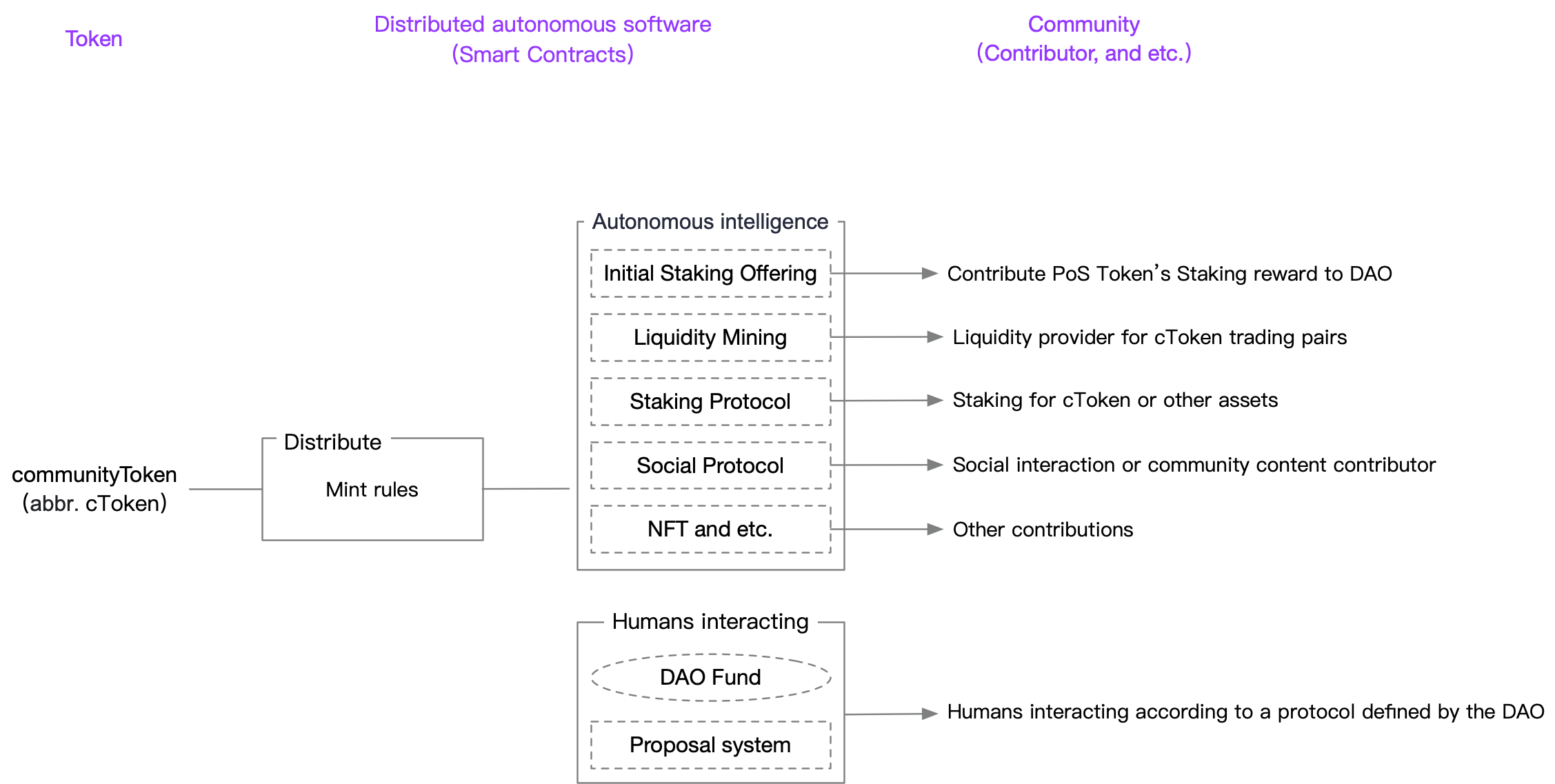🏅DAO Model
Stan Larimer considers Bitcoin as a shareholder-owned, employee-run, non-profit crypto company! Bitcoin pays for “mining” services that verify transactions and secure the network in newly generated bitcoins, where miners can exchange bitcoins for other currencies, goods and services.
In Bitcoin DAO, the company's operating rules cannot be changed unless a majority of stakeholders vote for another version of the software. It is not the holders of existing shares that make this decision, but the "employees" who contribute computer resources (mining robots) to run the company.
This is exactly what Bitcoin does, shareholders get equity growth, employees get voting rights, and all "income" is paid to employees as compensation for their work. It has no profit.
Bitcoin DAO model
The DAO may be the Holy Grail of Web3, but it's also the most vaguely defined. Given this, let's try to define a DAO from a Bitcoin perspective.
A DAO is a fluid online community that uses distributed autonomous software or smart contracts to issue its own internal token and distribute it to its contributors. The Bitcoin DAO model is as follows:
When we talk about Bitcoin, we can actually view Bitcoin in three different ways:
Token perspective: each bitcoin can be regarded as a small "share" of the Bitcoin organization
System perspective: Bitcoin is a distributed autonomous software that follows rules defined by stakeholders
Community perspective: Bitcoin is operated by miners and contributed by bitcoin holders, thus forming the Bitcoin community
DAO model
However, people are not satisfied with DAOs like Bitcoin, because it is not smart and powerful enough: 1) Bitcoin does not "hire" people other than mining protocols; 2) It follows simple rules and relies on high autonomous intelligence to upgrade and manage, unable to deal with complex rules.
The vast majority of DAOs still require a lot of human participation and interaction according to the DAO-defined protocols to ensure their normal operation. Therefore, DAOs automation is at the center and humans are at the edge.
The following is a more complex DAO model evolved on the basis of the Bitcoin DAO model:
This DAO model supports the creation of richer types and more complex DAOs. Compared with Bitcoin DAO, it has the following characteristics:
Anyone can easily deploy smart contracts on Ethereum or other public chains, issue DAO tokens (or community tokens), and define minting rules.
In addition to supporting highly autonomous intelligent distribution such as the Bitcoin mining protocol, DAO can also distribute community tokens to contributors through the proposal voting system with the help of human wisdom.
Last updated

